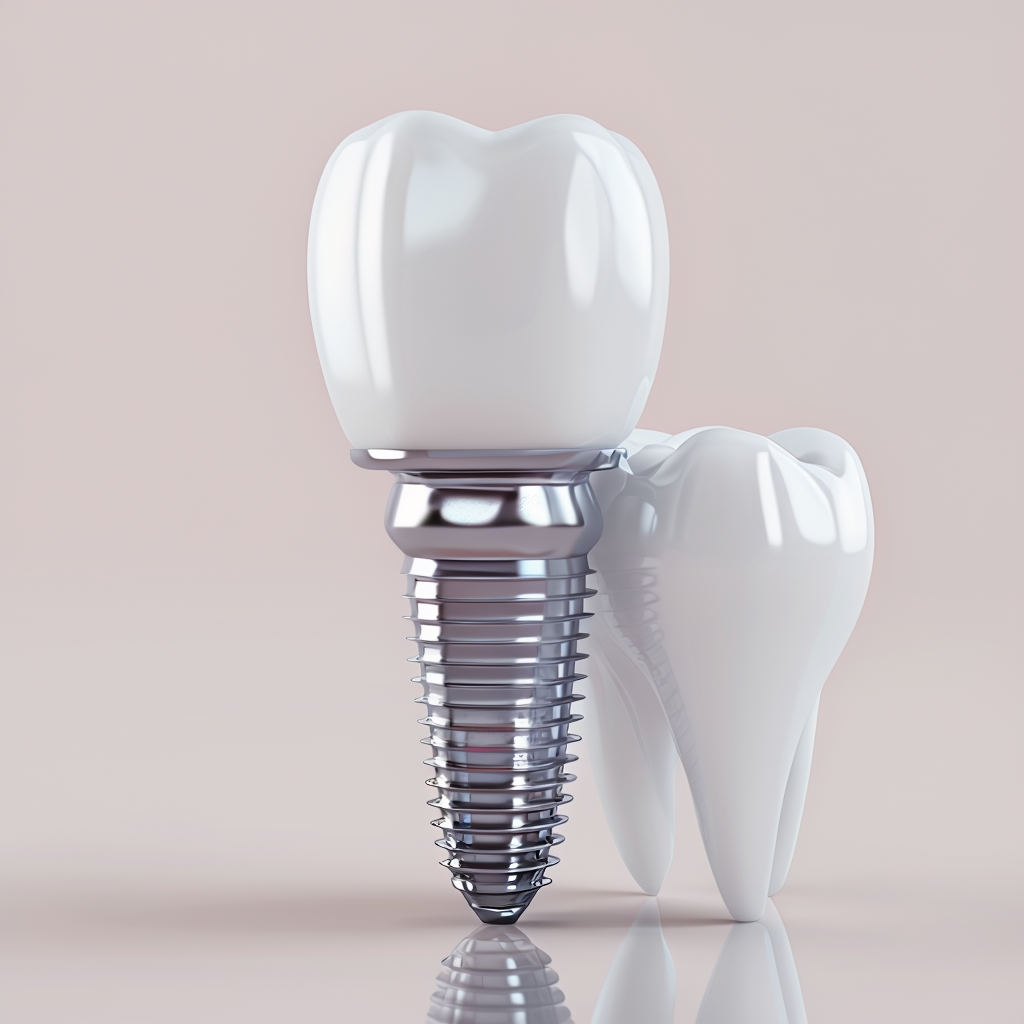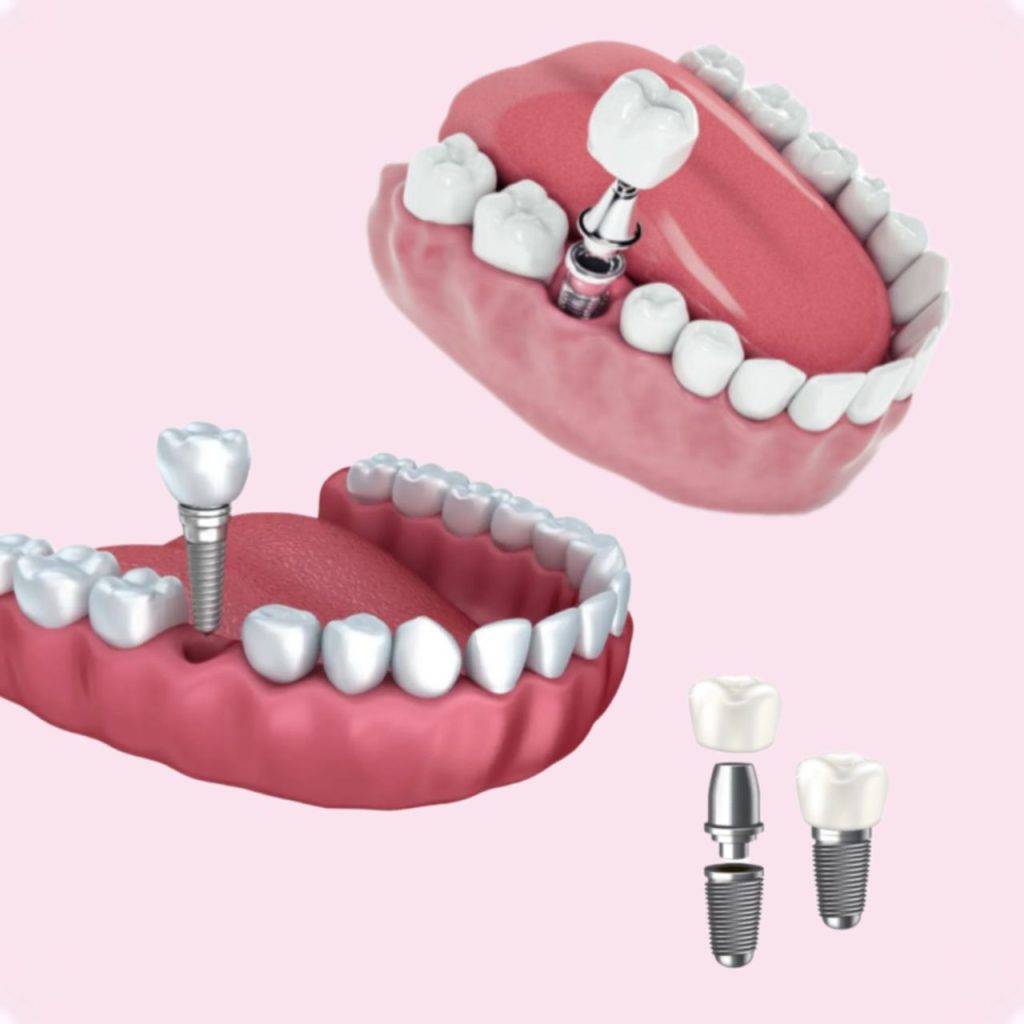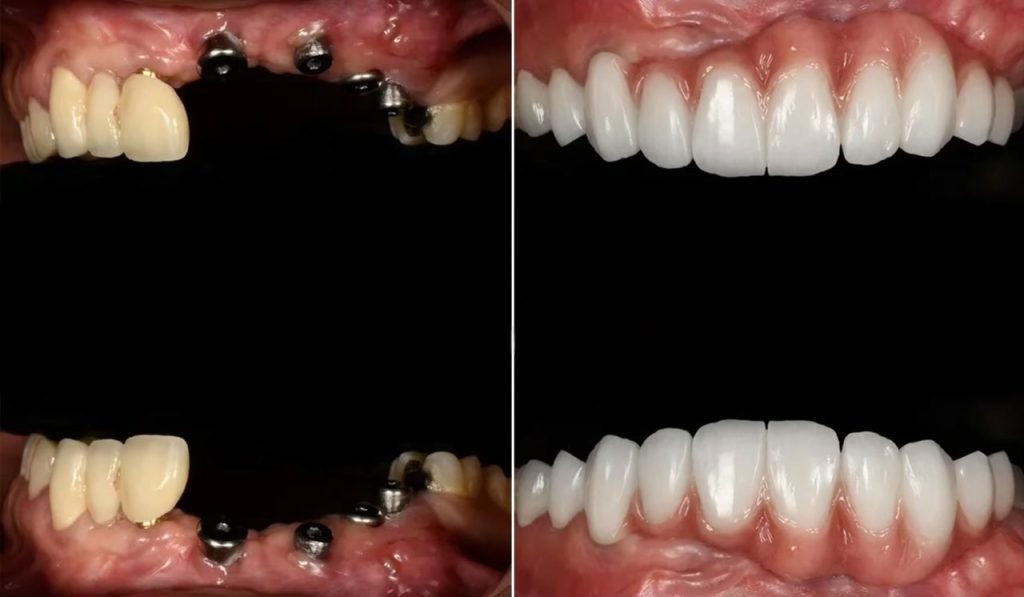Looking for a permanent tooth replacement? Dental implants might be the life-changing solution you’re looking for! This comprehensive guide will take you through the procedure, benefits, risks, aftercare, and limitations of dental implants. We’ll also compare dental implants with other tooth replacement options and discuss global statistics.
Dental implants are a popular and effective way to replace missing teeth and restore your smile. Unlike traditional dentures, implants provide a permanent solution that looks, feels, and functions like natural teeth. This article aims to provide you with all the information you need about dental implants, from the procedure to the benefits, risks, aftercare, and limitations.
The Dental Implant Procedure

The dental implant process involves several steps, typically completed over several months:
Initial Consultation
- The process begins with an initial consultation with your dentist or oral surgeon. During this visit, they will evaluate your oral health, take X-rays, and discuss your treatment options. Learn more about the significance of dental consultations in our article on Why Regular Dental Checkups Matter: The Secret to a Healthy, Confident Smile.
Preparation and Planning
- If you are a suitable candidate for dental implants, your dentist will create a personalized treatment plan. This may involve extracting any remaining damaged teeth and preparing the implant site. For more details on comprehensive dental care, refer to our Complete Guide to Modern Dentistry: Services, Treatments, and Innovations.
Implant Placement
- During the implant placement procedure, a titanium post is surgically inserted into the jawbone. This post acts as a replacement root for the missing tooth. The jawbone will need time to heal and integrate with the implant, a process called osseointegration, which can take several months. Learn more about advanced dental procedures in our article on The Future of Dentistry: Cutting-Edge Techniques and Innovations.
Abutment Placement
- Once osseointegration is complete, an abutment is attached to the implant post. The abutment serves as a connector between the implant and the artificial tooth (crown).
Crown Placement
- Finally, a custom-made crown is attached to the abutment. The crown is designed to match the color and shape of your natural teeth, providing a seamless appearance. For more information on dental crowns and other cosmetic procedures, check out our Ultimate Guide to Teeth Whitening: Bleaching, Composite Bonding, and Veneers.
Benefits of Dental Implants

Dental implants offer numerous advantages over traditional tooth replacement options:
Natural Look and Feel
- Implants look, feel, and function like natural teeth, providing a more comfortable and natural experience compared to dentures.
Durability and Longevity
- With proper care, dental implants can last a lifetime, making them a cost-effective long-term solution. For detailed post-care instructions, refer to our Comprehensive Guide to Dental Implants and Post-Care.
Improved Oral Health
- Implants help maintain the structure of your jawbone, preventing bone loss and preserving facial structure. Learn more about maintaining oral health in our article on How to Prevent Tooth Decay.
Enhanced Comfort
- Unlike removable dentures, implants are fixed in place, eliminating the discomfort and inconvenience associated with dentures.
Improved Speech and Eating
- Implants provide stability and strength, allowing you to speak and eat with confidence. For additional strategies on maintaining oral health, read our article on Effective Strategies to Relieve Tooth Pain: A Comprehensive Guide.
Who Can Get Dental Implants?

Dental implants are suitable for many individuals, but not everyone is a candidate. Ideal candidates for dental implants include those who:
- Have good oral health: Healthy gums and adequate bone density to support the implant.
- Have sufficient bone in the jaw: Adequate bone is necessary for the osseointegration process.
- Maintain good oral hygiene: Commitment to good oral hygiene practices and regular dental visits.
- Are non-smokers: Smoking can interfere with the healing process and increase the risk of implant failure.
Who Cannot Get Dental Implants?

There are certain conditions and factors that may prevent individuals from getting dental implants:
- Severe oral health problems: Individuals with untreated gum disease or significant oral infections.
- Insufficient bone density: Lack of adequate bone to support the implant may require bone grafting. For more details on comprehensive dental care, refer to our Complete Guide to Modern Dentistry: Services, Treatments, and Innovations.
- Certain medical conditions: Conditions like uncontrolled diabetes or heart disease can increase surgical risks.
- Smokers: Smoking can negatively impact the healing process and reduce the success rate of implants.
Risks and Complications of Dental Implants
While dental implants have a high success rate, there are potential risks and complications that you should be aware of:
Potential risks include:
- Sinus issues
- Nerve damage
- Implant rejection
Discuss these risks with your dentist before proceeding.
Comparison: Dental Implants vs. Dentures vs. Bridges
To help you make an informed decision, let’s compare dental implants with other tooth replacement options:
| Feature | Implants | Dentures | Bridges |
|---|---|---|---|
| Durability | Lifelong with care | Replace every 5-8 years | Replace every 5-10 years |
| Appearance | Feels like natural teeth | May look artificial | Looks like natural teeth |
| Maintenance | Brush and floss like normal | Special cleaning required | Brush and floss like normal |
| Bone Health | Prevents bone loss | No bone preservation | Prevents bone loss |
| Comfort | Fixed, no slippage | Can cause sore spots | Fixed, may cause discomfort |
| Cost | Higher initial investment | Lower initial cost | Moderate initial cost |
Global Statistics on Dental Implants
Dental implants are widely used around the world. According to the American Dental Association (ADA), more than three million Americans have dental implants, and this number is growing by approximately 500,000 annually. Globally, the dental implant market continues to expand, with predictions that it will exceed $6.5 billion by 2028.
| Region | Number of Implants (Millions) | Annual Growth Rate (%) |
|---|---|---|
| North America | 3.5 | 7.2 |
| Europe | 2.7 | 6.5 |
| Asia-Pacific | 1.8 | 8.1 |
| Latin America | 1.1 | 7.9 |
| Middle East | 0.6 | 6.8 |
| Africa | 0.3 | 6.0 |
Source: World Health Organization (WHO) and American Dental Association (ADA).
Why Dental Implants are the Better Option
Dental implants offer several significant advantages over traditional dentures and bridges:
- Long-Term Solution: Unlike dentures that may need to be replaced every 5-10 years, implants can last a lifetime with proper care. You can read more about longevity and cost-effectiveness in our Comprehensive Guide to Dental Implants and Post-Care.
- Natural Appearance and Function: Implants are designed to look and function like natural teeth, offering better aesthetics and functionality. You can explore more about the cosmetic benefits of implants in our Ultimate Guide to Teeth Whitening: Bleaching, Composite Bonding, and Veneers.
- Bone Preservation: Implants prevent bone loss and maintain the structure of the jawbone, unlike dentures which can lead to bone resorption. Learn more about maintaining oral health in our article on How to Prevent Tooth Decay.
- Improved Quality of Life: With implants, patients experience improved comfort, stability, and confidence in their daily activities. Discover more on the benefits of modern dental procedures in our Complete Guide to Modern Dentistry: Services, Treatments, and Innovations.
Frequently Asked Questions
Are dental implants painful?
- The implant placement procedure is performed under local anesthesia, minimizing discomfort. Post-surgery, mild pain and swelling are expected but can be managed with prescribed pain medications.
How long does it take for dental implants to heal?
- The healing and osseointegration process can take several months, typically between three to six months, depending on individual healing rates.
Who is a good candidate for dental implants?
- Ideal candidates have good oral health, sufficient bone density, and commitment to maintaining oral hygiene. Non-smokers are preferable as smoking can hinder the healing process. For more information on dental health, refer to our Effective Strategies to Relieve Tooth Pain: A Comprehensive Guide.
How should I care for my dental implants?
- Regular brushing, flossing, and dental check-ups are essential. Avoid smoking and follow your dentist’s aftercare instructions to ensure the longevity of your implants. For more details on maintaining oral health, read our article on How to Prevent Tooth Decay.
How much do dental implants cost?
- The cost of dental implants varies based on factors such as geographic location, dental specialist expertise, and the number of implants required. Consulting with your dentist will provide a more accurate estimate.
Are there any alternatives to dental implants?
- Yes, alternatives include dentures and bridges. Each option has its own benefits and drawbacks, which should be discussed with your dentist to determine the best solution for your needs. Refer to our comparison section for more details on Dental Implants vs. Dentures vs. Bridges.
How long do dental implants last?
- With proper care and maintenance, dental implants can last a lifetime. Regular dental visits and good oral hygiene practices are key to the longevity of your implants.
What are the potential risks and complications associated with dental implants?
- Potential risks include infection, implant rejection, nerve damage, and sinus issues. Discuss these risks with your dentist to fully understand the procedure. For more information, refer to the section on Risks and Complications of Dental Implants.
Conclusion
Dental implants offer a lasting, natural-looking solution for missing teeth—boosting both oral health and confidence! By understanding the procedure, benefits, risks, aftercare, and limitations, you can make an informed decision about whether dental implants are right for you. For more information on dental care and treatments, visit our Contact Us page.
